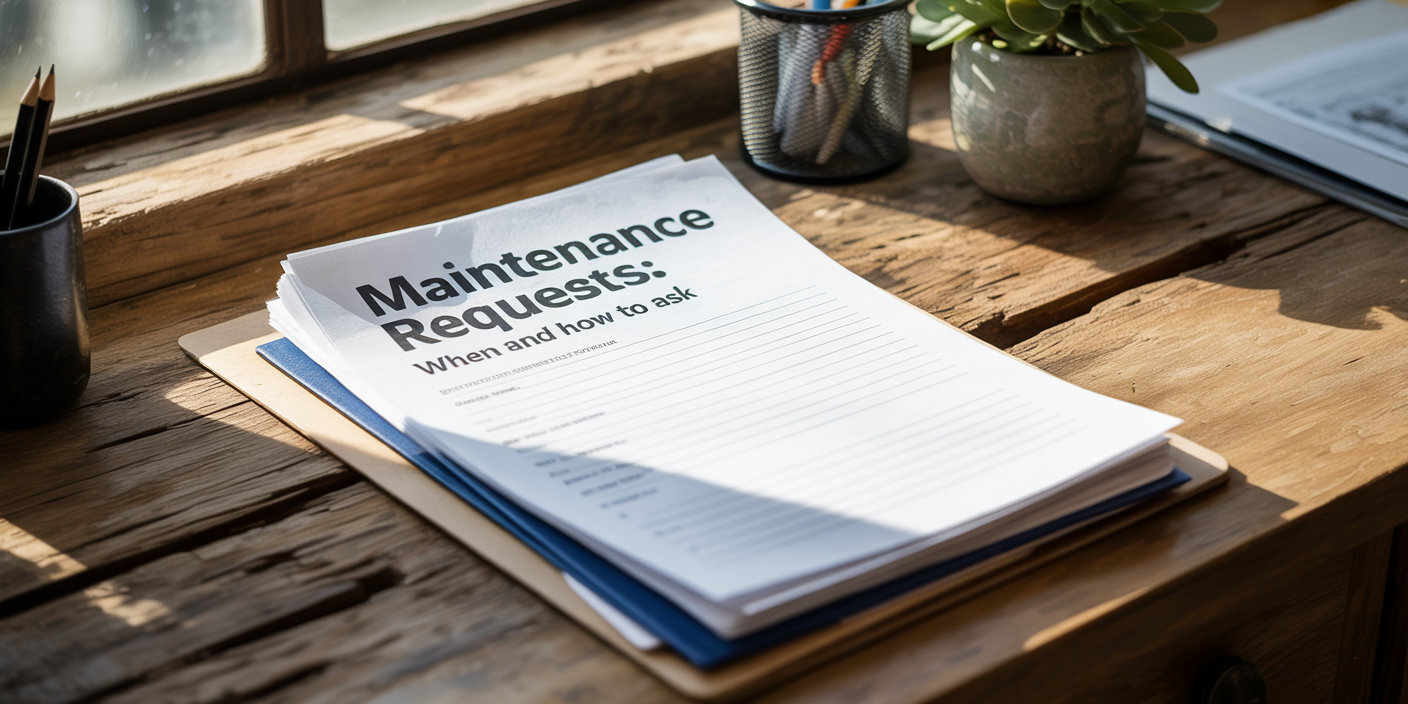Maintenance Requests: When and How

Understanding when and how to submit maintenance requests is essential for maintaining a good relationship with your landlord while ensuring your rental property remains safe and habitable. Proper communication about maintenance issues protects both your living conditions and your legal rights as a tenant, while also helping landlords address problems before they become costly major repairs.
The distinction between emergency and non-emergency maintenance requests is crucial for both tenants and landlords. Emergency situations require immediate attention and typically include issues that threaten health, safety, or property damage. These include gas leaks, major water leaks, electrical hazards, heating failures in winter, air conditioning failures in extreme heat, and security issues like broken locks.
Emergency maintenance issues should be reported immediately, often through a 24-hour emergency line provided by your landlord or property management company. Don't wait until business hours to report true emergencies. When calling, clearly explain the situation, emphasize the urgent nature of the problem, and provide your contact information and availability for repair access.
Non-emergency maintenance requests include issues that need attention but don't pose immediate danger or risk of major damage. These might include minor plumbing issues like slow drains or dripping faucets, paint touch-ups, squeaky doors, burnt-out light bulbs in common areas, or appliance malfunctions that have workarounds. These should be reported promptly but through regular communication channels.
Most landlords prefer written maintenance requests, as they create a paper trail and ensure clear communication about the problem. Whether submitting requests through email, online portals, or written forms, be specific about the issue, its location, and when you first noticed it. Include photos when possible, as visual documentation helps repair technicians understand the problem before arriving.
When writing maintenance requests, provide detailed descriptions that help landlords understand the scope and urgency of the problem. Instead of writing "toilet broken," specify "toilet in main bathroom won't flush – handle moves but no water flows when pressed." This level of detail helps ensure the right repair person comes with appropriate tools and parts.
Response timeframes for maintenance requests vary by urgency and local regulations. Emergency issues should typically be addressed within 24 hours, while non-emergency issues might have 7-30 days for resolution, depending on local laws and lease agreements. Understanding these timeframes helps you know when follow-up communication is appropriate.
Preparing for maintenance visits involves making the repair area accessible and being available during scheduled appointment windows. Remove personal items from around the problem area, secure pets, and ensure clear access paths. If you can't be present, coordinate with your landlord about key access while understanding your rights regarding entry notice and privacy.
Follow-up communication is important when maintenance issues aren't resolved satisfactorily or within reasonable timeframes. Send polite but firm reminders referencing your original request date and describing ongoing problems. If repairs seem inadequate or temporary, communicate this promptly rather than waiting for the problem to worsen.
Document all maintenance communications and outcomes for your records. Keep copies of written requests, photos of problems, and notes about repair visits including dates, technician names, and work performed. This documentation protects you if disputes arise about property conditions, security deposits, or habitability issues.
Understanding your responsibilities alongside landlord obligations helps maintain positive relationships. While landlords must address structural, safety, and habitability issues, tenants are typically responsible for minor maintenance like replacing light bulbs, changing air filters, and keeping drains clear of hair and debris. Review your lease agreement to understand these divisions of responsibility.
If your landlord is consistently unresponsive to legitimate maintenance requests or if repairs are inadequate, you may need to escalate the situation. Research your local tenant rights, contact housing authorities if necessary, and consider consulting with tenant advocacy organizations. However, always attempt to resolve issues through direct communication first, as most landlords prefer to address problems promptly rather than face legal complications or unhappy tenants.
